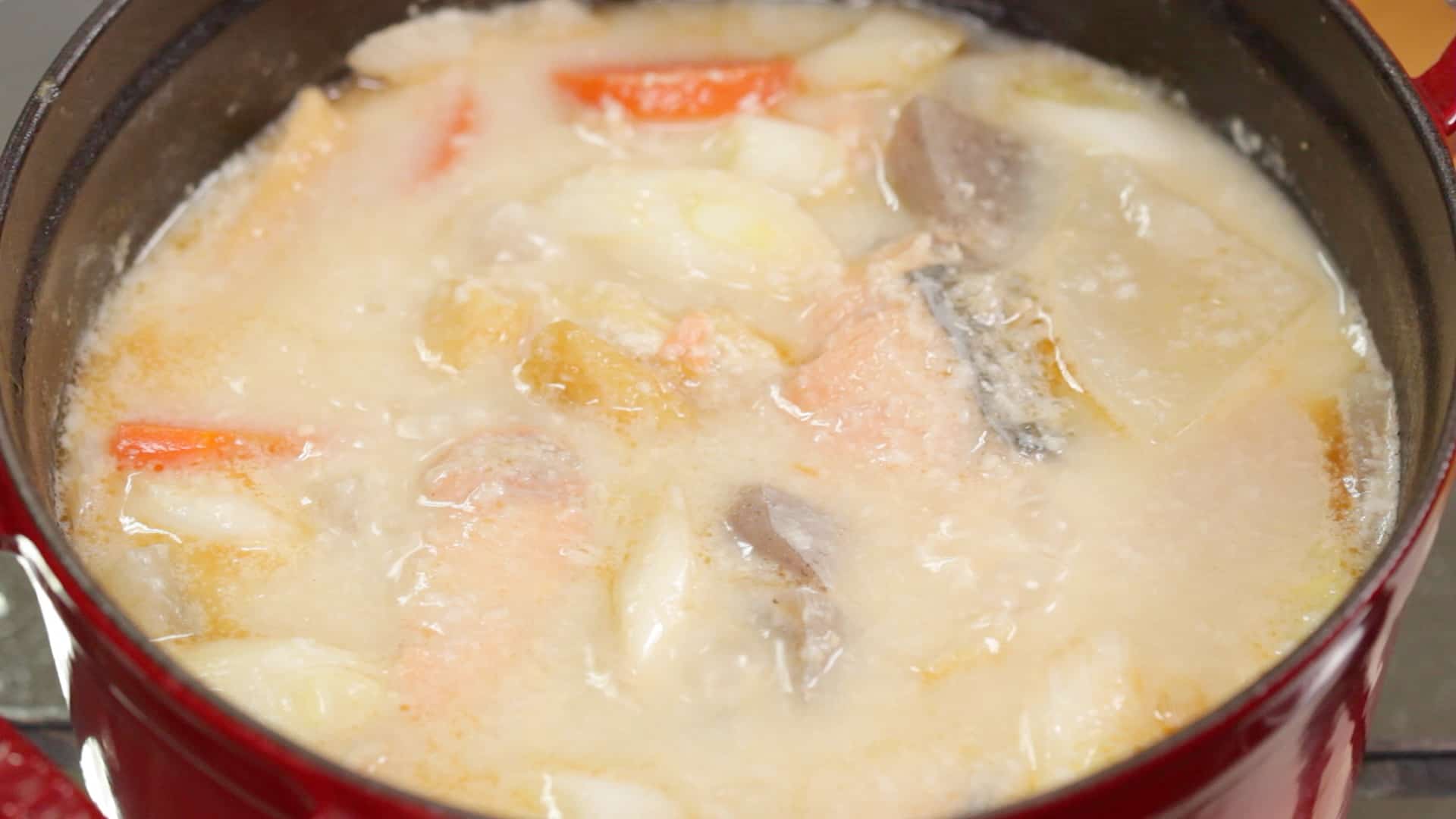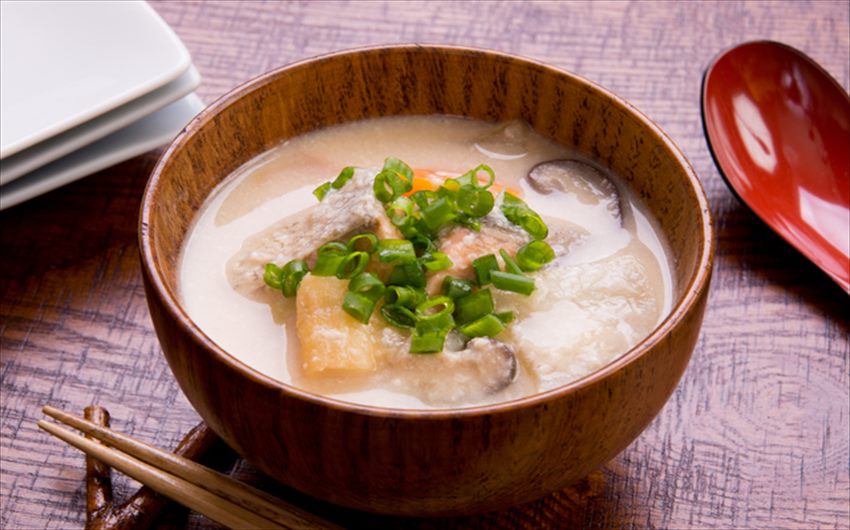Kasujiru
Kasujiru is a traditional Japanese soup that has been enjoyed for centuries. It is a flavorful and nutritious dish that is perfect for cold weather or when you're feeling under the weather. This soup is made with sake lees, which are the bits of rice and yeast left over from the fermentation process. It is an easy and delicious way to use up these leftovers, and the result is a soup that is both savory and warming.
Pain Points
Many people are hesitant to try kasujiru because they may not be familiar with the ingredients. Sake lees can be difficult to find outside of Japan, and some people may be put off by the idea of using them in a soup. In addition, the salted salmon and root vegetables used in the soup may not be ingredients that everyone is accustomed to. However, once you try kasujiru, you may be surprised at how delicious and comforting it is.
Target
The target of kasujiru is anyone who enjoys trying new and unique dishes or who is looking for a flavorful and nutritious soup to enjoy. It is also a great option for those who are interested in Japanese cuisine or who want to use up any leftover sake lees they may have.
Summary of Main Points
Kasujiru is a traditional Japanese soup made with sake lees, salted salmon, and root vegetables. Although some may be hesitant to try it due to unfamiliar ingredients, it is a comforting and warming dish that is perfect for cold weather or when you're feeling under the weather.
What is Kasujiru?
Kasujiru is a savory soup made with sake lees, which are the remnants of the rice and yeast left over after the sake-making process. The lees are mixed with dashi (Japanese stock made with dried bonito flakes and kelp), salted salmon, and root vegetables such as carrots, daikon radish, and burdock root. The result is a soup that is both flavorful and nutritious.

My first experience with kasujiru was during a trip to Japan. My hosts prepared it for me, and I was hesitant to try it at first because I wasn't sure what to expect. However, once I took a sip, I was hooked. The soup was so rich and flavorful, and the salted salmon added a nice salty contrast to the slightly sweet sake lees broth. I knew I had to try to make it myself when I got home.
How to Make Kasujiru
Making kasujiru is relatively easy, although finding sake lees can be a bit challenging if you don't live in Japan. If you do have access to sake lees, you can simply mix them with dashi and salted salmon, then add the root vegetables and bring everything to a simmer until the vegetables are tender. If you don't have sake lees, you can substitute miso paste or soy sauce for a similar flavor profile.

Health Benefits of Kasujiru
Kasujiru is not only delicious, but it is also packed with health benefits. Sake lees are high in amino acids and B vitamins, which can help support a healthy metabolism and promote healthy skin and hair. The root vegetables used in the soup provide an additional source of vitamins and minerals, making kasujiru a well-rounded and nutritious meal choice.
Try Kasujiru for Yourself
If you're interested in trying kasujiru for yourself, I highly recommend giving it a shot. The savory and warming flavors make it a perfect choice for chilly weather or when you're feeling under the weather. You can always substitute ingredients if you can't find the traditional ones, such as using regular salmon instead of salted salmon. Get creative and make it your own!
Question and Answer
What is the history of kasujiru?
Kasujiru has been enjoyed in Japan for centuries and was originally a way to use up the leftover sake lees from the sake-making process. It is a traditional dish that is still enjoyed today.
Is kasujiru difficult to make?
While it may be difficult to find some of the traditional ingredients if you don't live in Japan, the recipe itself is relatively simple and straightforward.
Is kasujiru good for you?
Yes! Kasujiru is not only delicious, but it is also packed with health benefits. Sake lees are high in amino acids and B vitamins, and the root vegetables used in the soup provide an additional source of vitamins and minerals, making kasujiru a well-rounded and nutritious meal choice.
What can I substitute for sake lees if I can't find them?
If you can't find sake lees, you can substitute miso paste or soy sauce for a similar flavor profile.
Conclusion of Kasujiru
Kasujiru is a traditional Japanese soup that is both flavorful and nutritious. Although it may be challenging to find some of the traditional ingredients if you don't live in Japan, the recipe itself is relatively simple and straightforward. Whether you're looking for a comforting meal or want to try something new, kasujiru is a delicious and satisfying choice.
Gallery
How To Cook Kasujiru | Cooking, Food, Food Recipes

Photo Credit by: bing.com / itisapieceofcake2011
Salmon Kasujiru Recipe (Savory And Nutritious Sake Lees Soup With

Photo Credit by: bing.com / salmon recipe nutritious sake savory vegetables lees soup votes
Kasujiru: Sake-Flavored Soup

Photo Credit by: bing.com /
Recipes For Tom: Kasujiru / Sake Lees Soup With Salted Salmon And Root

Photo Credit by: bing.com / salmon tom recipes add usuage cook minutes few
Salmon Kasujiru – Recipe

Photo Credit by: bing.com / salmon tashcakes